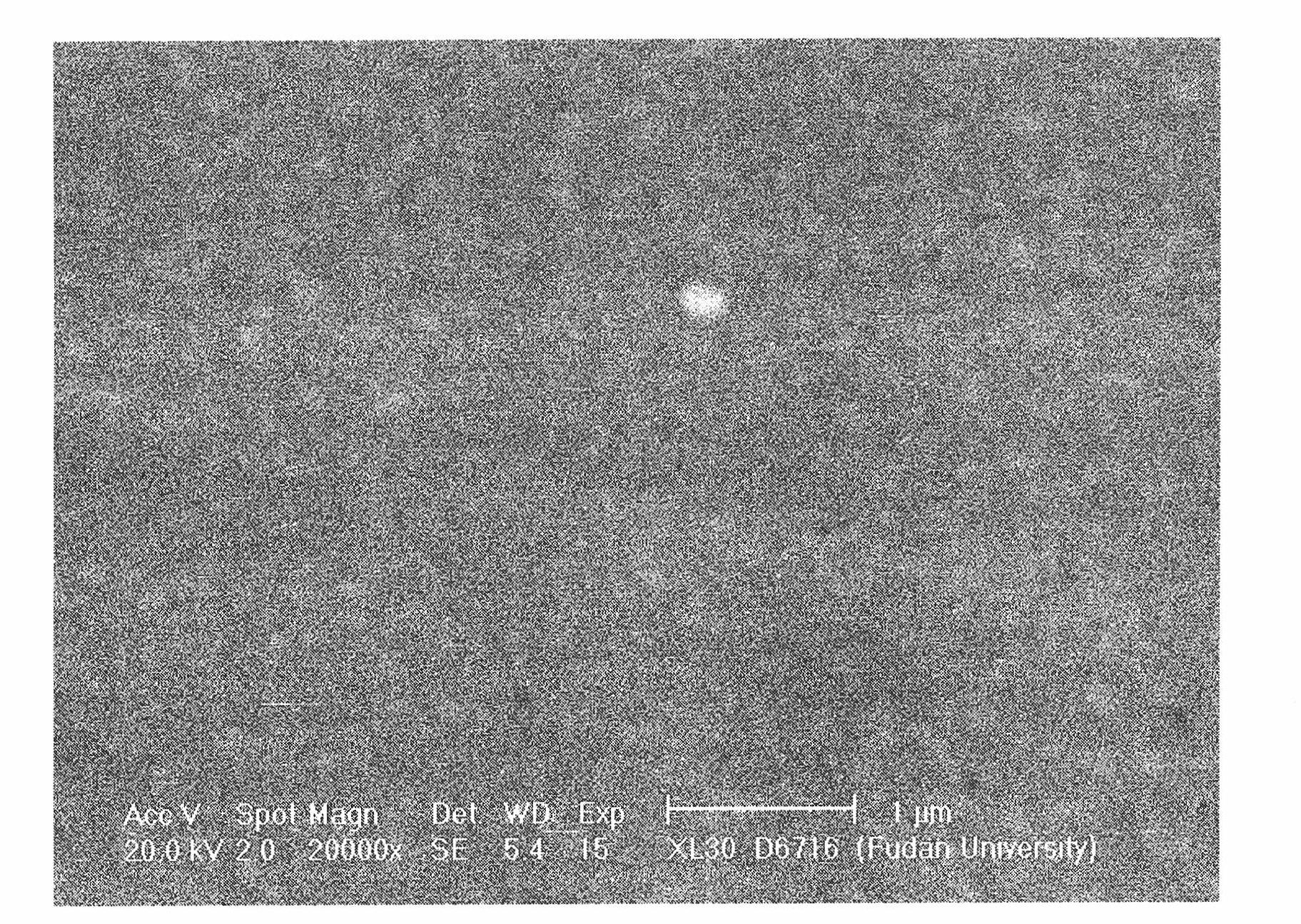Process for producing double-layer flexible cover copper plate
A technology for flexible copper-clad laminates and substrate surfaces, which is applied to the improvement of metal adhesion of insulating substrates, coatings, and liquid chemical plating. The effect of high bond strength and high conductivity
- Summary
- Abstract
- Description
- Claims
- Application Information
AI Technical Summary
Problems solved by technology
Method used
Image
Examples
Embodiment 1
[0021] A polyethylene terephthalate substrate with a thickness of 50 microns and an area of 20 cm × 30 cm was washed with deionized water, dried, and placed in a concentration of 0.1% γ-aminoethylaminopropyl trimethyl soak in an ethanol solution of oxysilane for 1 hour, take it out, rinse with ethanol, and dry to obtain a surface-hydroxylated polyethylene terephthalate substrate.
[0022] The surface hydroxylated polyethylene terephthalate substrate is placed in the acetone solution of 1% 2-mercaptoethyltrimethoxysilane, soaked for 3 hours, taken out, rinsed with acetone, dried, A polyethylene terephthalate substrate with surface thiol was obtained.
[0023] Dissolve 4g of copper sulfate, 10g of sodium potassium tartrate, 8g of sodium citrate, 6g of disodium edetate, 6g of dimethylamine borane, and 1.5g of sodium hydroxide in 500mL of deionized water. After the dissolution is complete, add deionized water , until the volume of the solution is 1L, the copper electroless plat...
Embodiment 2
[0026] A polytrimethylene terephthalate substrate with a thickness of 50 microns and an area of 20 cm × 30 cm was washed with deionized water, dried, and placed in methanol with a concentration of 0.5% 3-aminopropyltrimethoxysilane. soak in the solution for 1.5 hours, take it out, rinse with ethanol, and dry to obtain a surface-hydroxylated polytrimethylene terephthalate substrate.
[0027] Put the surface hydroxylated polytrimethylene terephthalate substrate in a butanone solution with a concentration of 0.1% 2-mercaptoethyltriethoxysilane, soak for 6 hours, take it out, rinse it with butanone, and dry it , to obtain a surface mercapto-polytrimethylene terephthalate substrate.
[0028] Dissolve 8g of copper sulfate, 5g of sodium potassium tartrate, 12g of sodium citrate, 4g of disodium edetate, 8g of dimethylamine borane, and 2g of sodium hydroxide in 500mL of deionized water. After the dissolution is complete, add deionized water. When the volume of the solution is 1 L, t...
Embodiment 3
[0031] Wash a polybutylene terephthalate substrate with a thickness of 50 microns and an area of 20 cm × 30 cm with deionized water, dry it, and place it in a concentration of 1% γ-aminoethylaminopropyl three Soak in an acetone solution of ethoxysilane for 2 hours, take it out, rinse with acetone, and dry to obtain a surface-hydroxylated polybutylene terephthalate substrate.
[0032] The surface hydroxylated polybutylene terephthalate substrate is placed in a tetrahydrofuran solution of 5% 3-mercaptopropyltrimethoxysilane, soaked for 4.5 hours, taken out, rinsed with tetrahydrofuran, and dried. A surface-mercaptolated polybutylene terephthalate substrate was obtained.
[0033] Dissolve 6g of copper sulfate, 7.5g of sodium potassium tartrate, 10g of sodium citrate, 8g of disodium edetate, 6g of dimethylamine borane, and 1g of sodium hydroxide in 500mL of deionized water. After the dissolution is complete, add deionized water , until the volume of the solution is 1L, the copp...
PUM
| Property | Measurement | Unit |
|---|---|---|
| thickness | aaaaa | aaaaa |
| peel strength | aaaaa | aaaaa |
| thickness | aaaaa | aaaaa |
Abstract
Description
Claims
Application Information
 Login to View More
Login to View More - R&D
- Intellectual Property
- Life Sciences
- Materials
- Tech Scout
- Unparalleled Data Quality
- Higher Quality Content
- 60% Fewer Hallucinations
Browse by: Latest US Patents, China's latest patents, Technical Efficacy Thesaurus, Application Domain, Technology Topic, Popular Technical Reports.
© 2025 PatSnap. All rights reserved.Legal|Privacy policy|Modern Slavery Act Transparency Statement|Sitemap|About US| Contact US: help@patsnap.com

